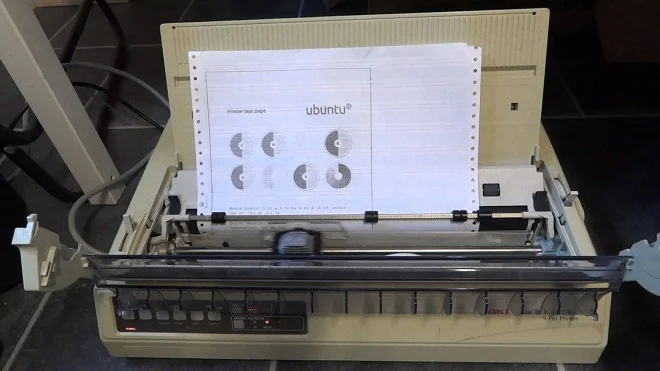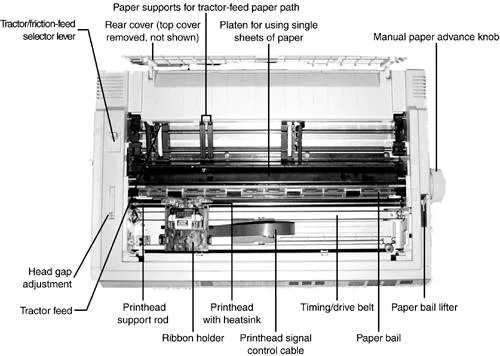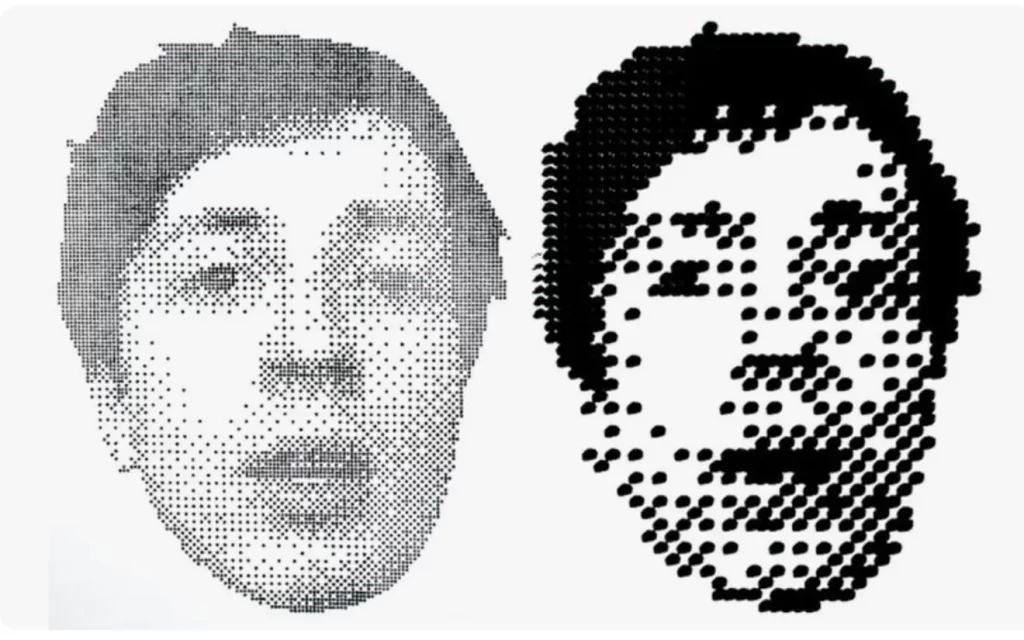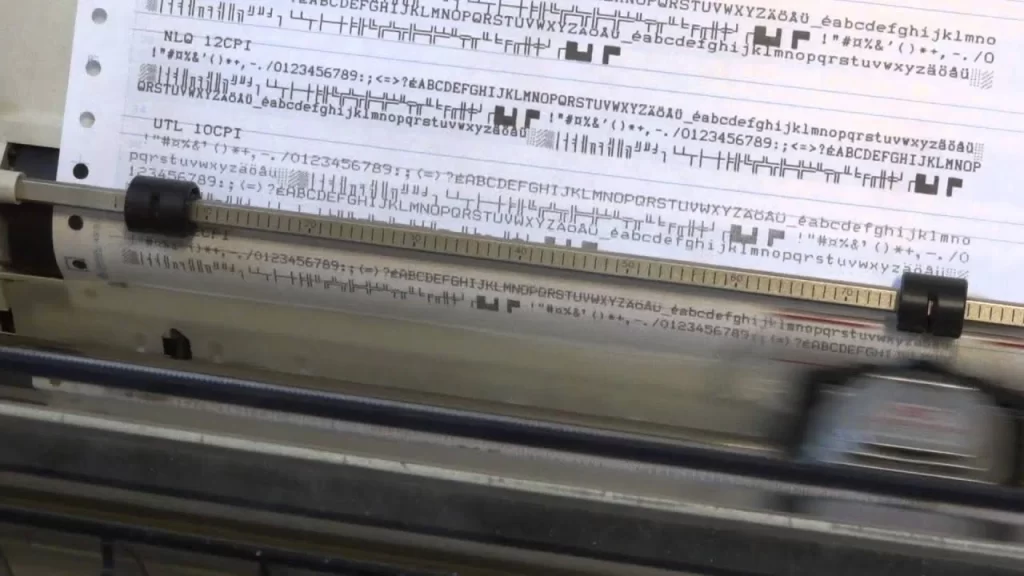Why Dot Matrix Printers Still Matter in 2024?
This modern age is all about laser printer machines and inkjet printers. It’s quite surprising to imagine dot matrix printers were once the backbone of office printing.
These printers were cherished for their clattering noise and the ability to print multi-part forms; used in printing businesses around the globe.
Though they may seem outdated and old series printers, these robust devices hold value in this modern age.
This blog will walk you through how dot matrix printers work, their key features, and the uses that make them still matter even today.
Table of Contents
What is a Dot Matrix Printer?
Dot matrix printers, also known as “impact matrix” sound techy and confusing. But don’t worry, theprinterexpert.com is at your fingertips to help you with these printers.
A dot matrix printer uses pins and ink-soaked ribbons to transfer an image onto a surface or paper. The printing process involves producing a pattern of small dots on paper to form desired characters and other graphics.
Being introduced in the 1970s and 1980s, these printers are still trending, because they are durable, reliable, relatively cheap, and can use multi-part forms, such as carbon copies.
These printers were used in businesses, offices, railway stations, and many places in old age. Some organizations are still using these devices for billing purposes

Dot Matrix Printers Working
The dot matrix printer works like a typewriter; the input data is translated into text and characters.
Understanding the dot matrix printers working process, it’s essential to grasp the basic components and the printing process.
- Print Head
The printhead is the heart of the dot matrix printer. It consists of a vertical array of tiny pins (usually 9 or 24) that strike the ink ribbon against the paper.
The number of pins determines the print quality—more pins mean higher resolution and better print quality.
- Ink Ribbon
The ink ribbon is a thin fabric strip soaked in ink, placed between the print head and the paper. When the print head pins strike the ribbon, ink is transferred to the paper, forming the desired characters or images.
- Platen
The platen is a cylindrical part, used to feed the paper through the printer. While the print head is fixed in the horizontal direction across the page the platen is in the vertical direction that enables the whole page to be printed line at a time.
- Dot Formation
Characters and images are created through a series of dots. The printer’s control circuitry activates specific pins in the print head to form a matrix of dots. This matrix creates any character or image, depending on the arrangement of the dots.
- Printing Process
- Data Reception: The printer receives data from a connected computer or terminal.
- Character Encoding: The data is translated into specific pin patterns in the print head.
- Impact and Transfer: The print head pins strike the ink ribbon, transferring ink to the paper.
- Paper Feeding: The platen advances the paper while the print head moves to the next position, repeating the process.
The result is a series of dots that come together to form readable text or simple graphics.

Key Features and Benefits of Dot Matrix Printer
Several compelling reasons make this printer still trending in this modern age. Some of its key features are the following:
Low Cost Per Page
Dot matrix printers are cheaper than other types of printers but the cost per page is considerably lower. This is because the ink ribbons used in these printers are comparatively inexpensive.
As the paper continues to roll, there’s no chance of prints fading out or the printer stopping during a job. This feature makes it a budget-friendly option for businesses looking for low-print quality rather than high-quality prints.
Printing Speed
The printing speed of dot matrix printers is measured in CPC (characters per second). Some printers can print 50 characters per second, while others can reach up to 5,000 characters per second.
Most of the printers have a setting that allows you to change the printing speed according to your needs.
Durability
Matrix printers are known for their robust body and longevity. They can withstand harsh environments, heavy usage, and hot, and humid conditions where modern printers might fail.
This makes it suitable for industrial settings or places where reliability is paramount. But one downside of these printers is that they can be noisy and might not suit a quiet work environment.
Multi-part Forms
One of the primary benefits of these printers is their ability to print on multi-part forms. No more headache of multiple passes or submission of different copies.
These printers can print multiple copies in a single pass. This feature is most important for industries that require multiple copies of documents, such as invoices, shipping labels, and purchase orders.
Reliability
Dot matrix printers are known to have a longer useful life than modern-day printers. They are generally more resistant to breakdowns compared to black-and-white printers and 3D printers, making it easier for businesses that can’t afford printing downtime to invest in.
Environmental Friendly
If your device has install-in sustainable technology, it has less harmful impacts on the environment. The world paradigm shifted by the Industrial Revolution; focusing more on eco-friendly equipment to save nature.
You may be surprised after knowing that these outdated printers are greener than modern-day printers. They consume less power and paper during the printing process. Additionally, it also reduces the carbon footprint and saves you money.
Minimal Maintenance
Thanks to the intuitive interface and mechanics—dot matrix printers are easy to maintain. They are often very reliable and can run for a long time without any hassles.
This means that less maintenance results in even higher savings for companies and thus the importance of wear plates.

Uses of Dot Matrix Printers Today
Despite being an older technology, these printers are still used in various industries. They are commonly found in:
- Retail: Used for printing receipts, invoices, and multi-part forms.
- Logistics: Ideal for creating shipping labels and documents.
- Industrial Settings: Reliable in harsh work environments, such as factories and warehouses.
- Government Agencies: Especially those that deal with large volumes of paperwork.
- Banking: Used for printing continuous forms and passbooks.
I have to say one thing here…with the advent of thermal, laser, and inkjet printers, dot matrix printing has become less common. However, they are still used in specific industries that need high-speed document printing.

Conclusion
Dot matrix printers are outdated for most individuals, but they still offer function in certain applications. They are also durable, very reliable, low cost per page, and can work well with multi-part forms making them suitable for some applications.
Though these printers are not as popular as they were earlier, they are one of the pillars of printing technology history.
So, why wait? To cherish all the above features and benefits, order a dot matrix printer and do RELAX!
